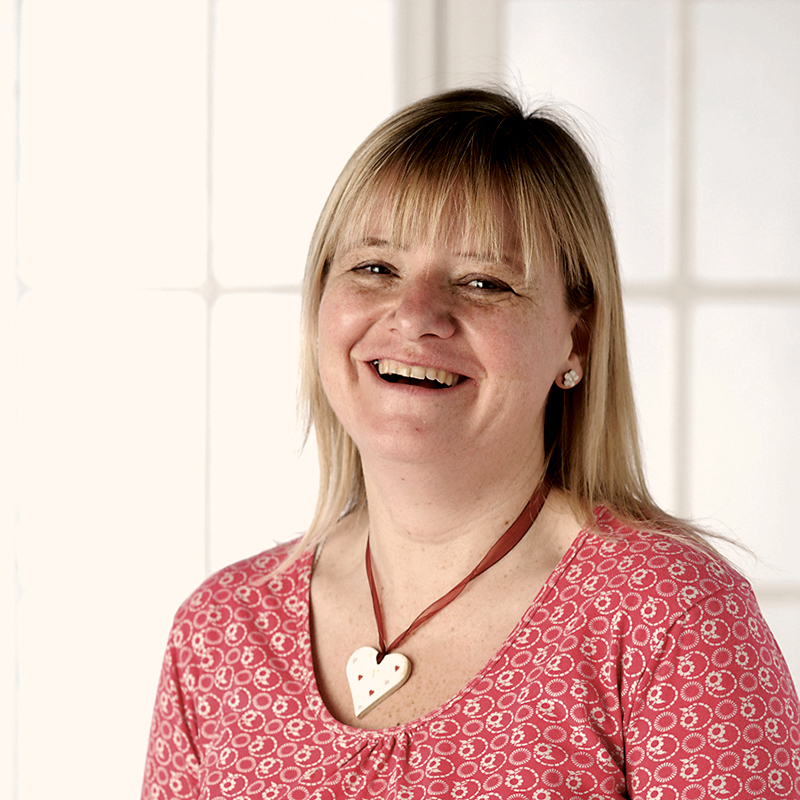Follow our guide to finding the right needles for your sewing machine. Fitting the right needle is a must for smooth stitching. Different fabrics and different stitch styles can benefit greatly from a spot of careful needle selection. Read on to find all you need to know about selecting the best type for the task... your sewing will thank you for it.
If you're new to machine sewing, you may have only used the universal needle, but it isn’t always the right one for every project. Sewing with the best type of needle for your fabric, thread and stitch type can prevent stitching problems and broken needles.
In the market for a new sewing machine? Take a look at Gathered's guide to the best sewing machines.
Get to know your sewing needles
To properly understand why changing your needle to suit your project is important, it helps to think about the different parts of a basic machine needle, and how they could potentially affect how your machine sews...
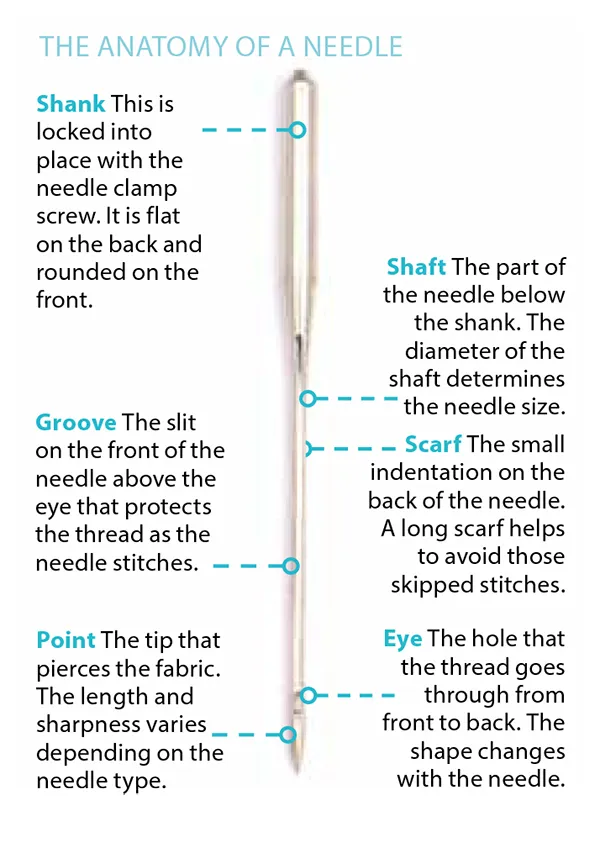
Find the right sewing needle size
Needles are labelled with two numbers. The larger number is the European metric size, and the smaller number is the American size. The lower the number, the finer the needle. The table below gives you a rough guide.
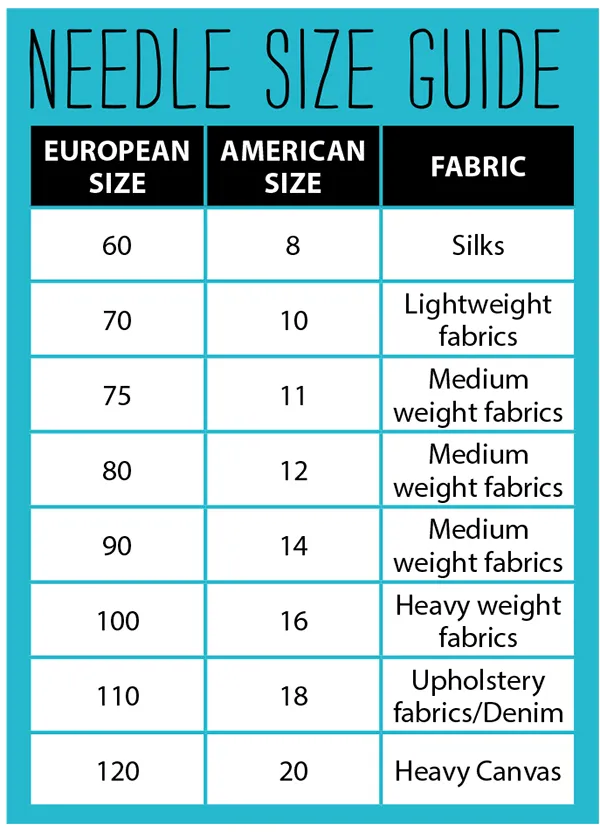
Sewing needle types
Needles differ by the size of the point, eye and shaft thickness. Follow our guide to needle types and you'll stitch with ease!
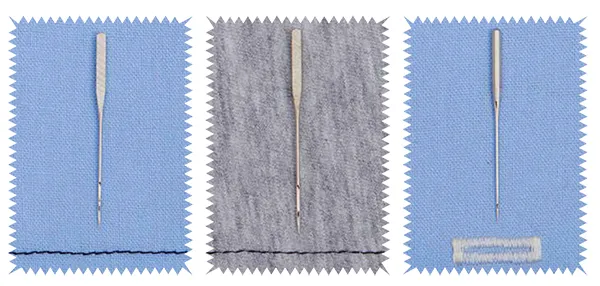
Universal (above right)
This needle has a slightly rounded point for stitching knits, but can also be used for woven fabrics. The finer points are ideal for lightweight fabrics, but choose a larger point for the heavyweights. You can use polyester, cotton or silk threads. Keep a stock of different sizes to hand.
Ball point (above centre)
This one has a more rounded point than the universal needle, so is only to be used for knit fabrics. The needle slides between the fabric threads rather than piercing them, so you won’t get snags, ladders or holes. Good for jersey fabric and fleece, as well as heavy knits.
Sharps (above right)
The sharp point and narrow strengthened shaft will pierce several layers of fabric. Ideal for straight stitching, particularly topstitching, on very fine and delicate fabrics. The sharp point makes it perfect for stitching neat buttonholes where the stitches are worked close together.
Get crafting with a practical sewing table
Transform your crafting room by getting a sewing table. These contain plenty of storage and many of them can also be used as desks. Find the right one for you with Gathered's pick of the best sewing tables.
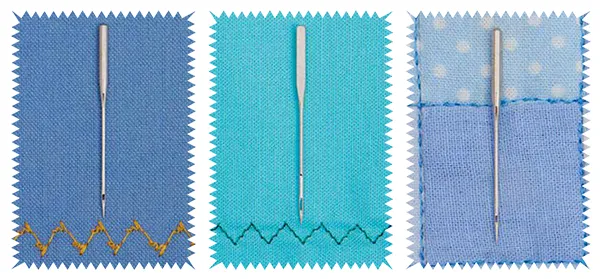
Embroidery (above right)
This needle has a large eye and a scarf designed to protect the thread whilst stitching dense patterns at high speed. This helps to stop the thread breaking during stitching. Can be used for machine embroidery on any fabric, and is ideal to use with rayon threads.
Metallic (above centre)
This has a larger eye than the machine embroidery needle, so is designed to be used with heavier threads. It has a large groove and a special scarf that protects the thread to stop it shedding and breaking. It’s used for stitching with metallic thread on any fabric.
Quilting (above right)
This has a sharp and tapered point with a longer shaft, so it can pierce multiple layers while keeping straight stitches. It is designed for stitching though several layers of fabric and seams without the needle deflecting so is ideal for patchwork and machine quilting.
Why choosing the right sewing needle is important
When you're using a sewing machine, it's really important to take the time to choose the correct sewing needle for the job. If you don't, you won't get the results that you're looking for.
If you're a new sewer, you may only have used the universal sewing needle before, but it's not right for every project or technique.
Picking your sewing thread
After you've chosen the correct needle, you need to select the right type of thread to use. Discover the best sewing thread for your project with Gathered.
